When given the opportunity to join the now-infamous expedition of 1996 that claimed the lives of eight mountaineers, he jumped at it.
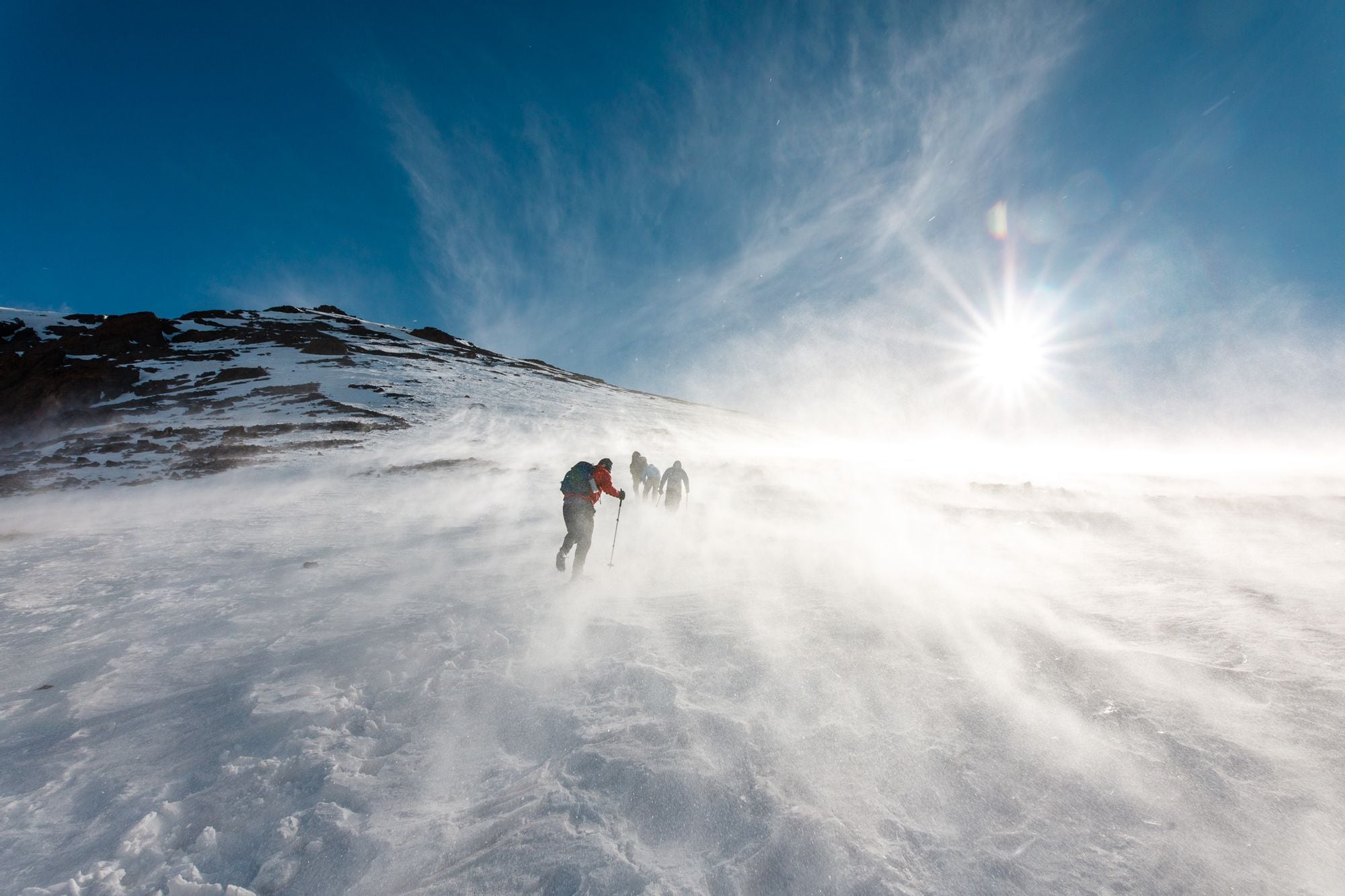
Krakauer was already an accomplished technical climber. I, meanwhile, am not an accomplished technical anything. Despite that, I was offered the chance to climb North Africa’s highest peak Jebel Toubkal, and I too jumped at the chance with childish enthusiasm, coupled with a child’s sense of reality – I had little to no consideration for just how hard climbing a 4,167m peak would be (spoiler alert: it’s proper hard).
Mt Toubkal is located in the Atlas Mountains, 63km south of Marrakech, and has become a popular peak for mountaineers to take on owing to its relatively low technical difficulty and its simple topographical prominence. This means it can be ascended in as little as two days from near sea level.
The trip to the High Atlases was arranged by Much Better Adventures, who promise to show small groups of keen trekkers two sides to a country that you wouldn’t usually think of seeing.

I arrived late (an error my end when booking my flights), and ratcheted up the difficulty by missing the rest of the group on the first day. I would effectively be climbing on my own with just a guide for company for the first stage of the ascent.
After touching down in Marrakech, I took a short taxi ride to Imlil, the base camp 1,740m above sea level where I’d start my summit attempt. Once I arrived, I got kitted out, scoffed my first tagine of many, and sized up the task ahead of me. Firstly, me and my guide Youssef – a serious, sage and worldly mountain man of only 25 – would trek the 13km to our refuge where we’d be staying for the night, then we’d be attempting the summit itself before sunrise.
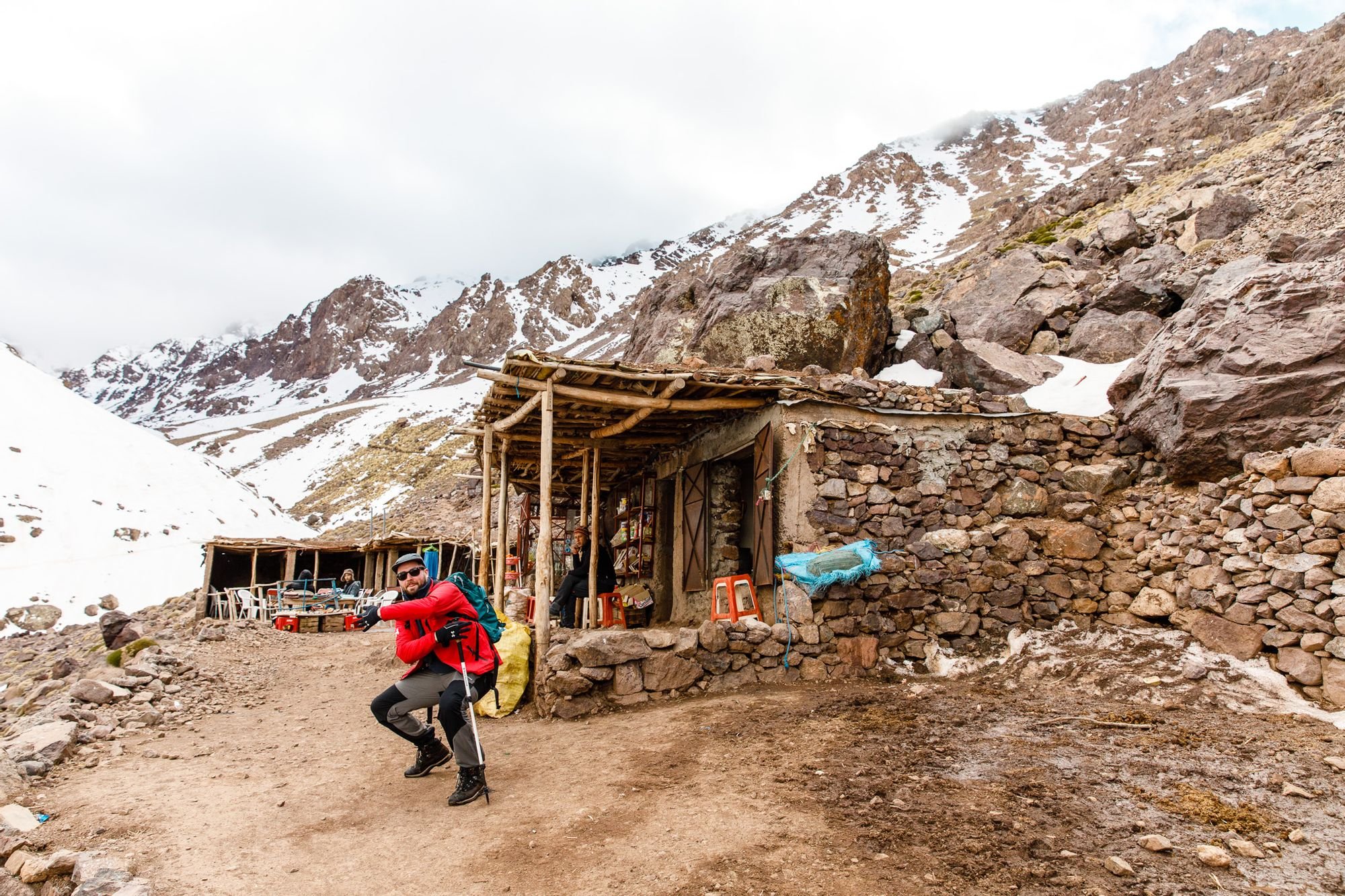
This trek was my favourite part of the trip. Despite my thinly-veiled moans about the journey’s length, the weather was glorious as we skirted through the surrounding villages of Imlil, heading up beaten-out tracks past precarious- looking muleteers (people on mules), through sharp valleys of scree, and into the snowy bowels of the peak’s base. After five hours of trekking, we’d ascended more than 2,100m and the air was now thin. My breathing got shorter and shorter as we approached the dim glow of the refuge where I would meet the rest of the team I’d later spend a morning moaning at. We ate another carb-heavy meal of soup, chicken and vegetable tagine, bread, fruit and more sweet tea before crashing out at 9pm.
We got up at 4:30am the next morning, supposedly well rested and energised sufficiently to take on the final 967m of vertical ascent. Apparently, the team were kept awake by a deafening snore from one of the group, which was weird because I’d slept fine. After breakfast, Youssef and our other guide Ibrahim strapped our crampons on and led us to the first slope of many we would have to zig-zag up to reach Toubkal’s peak.
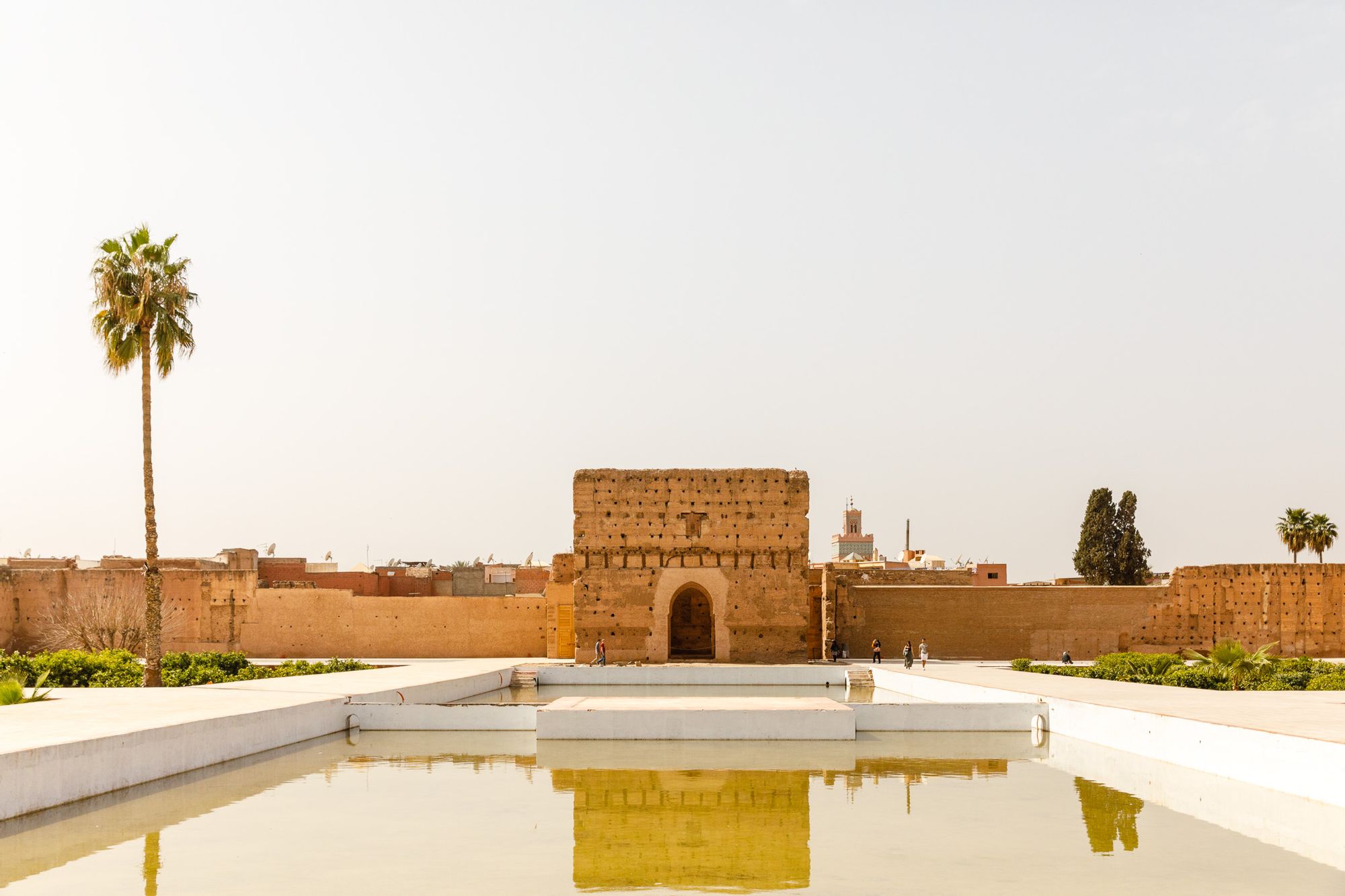
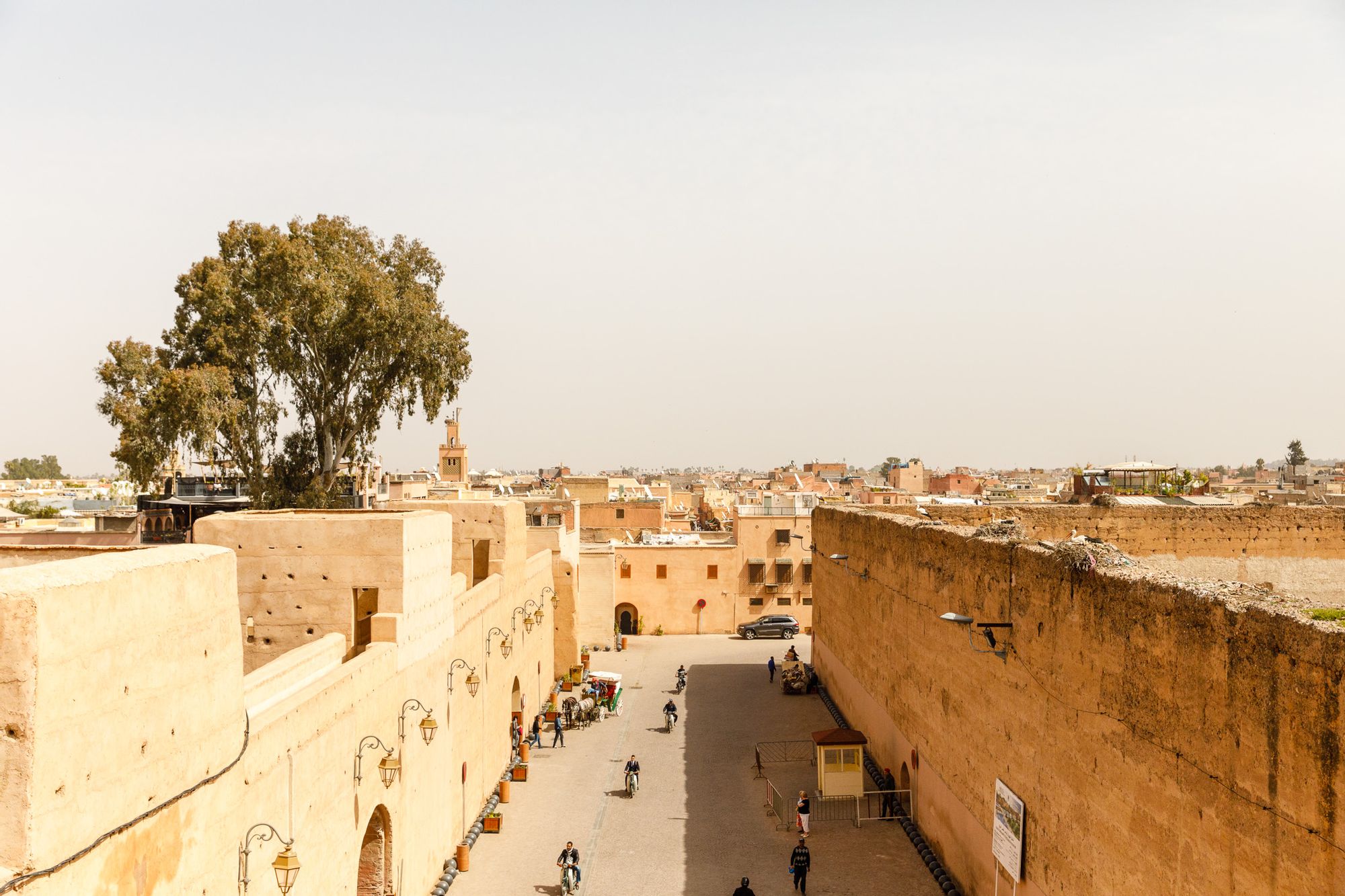
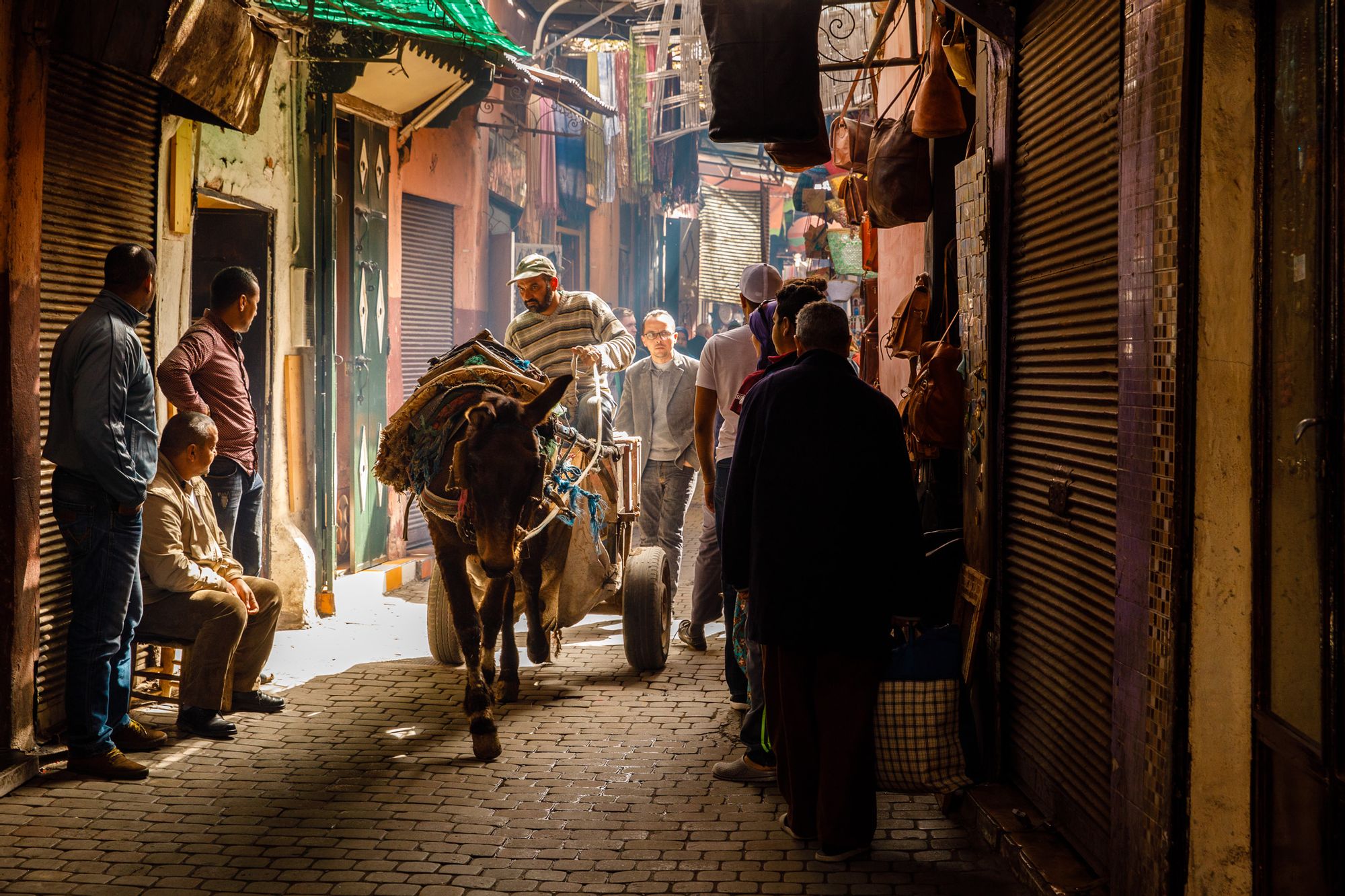
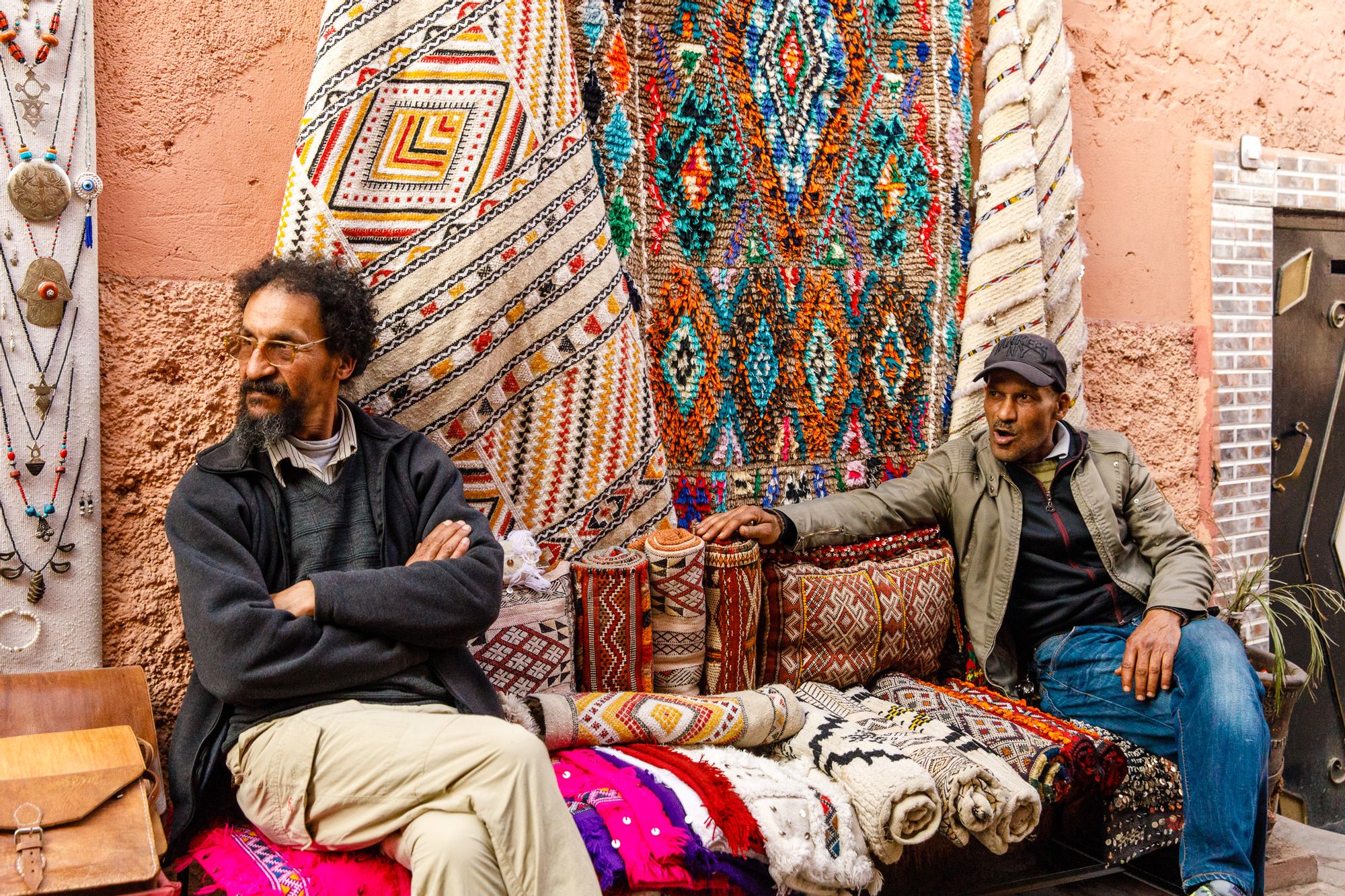
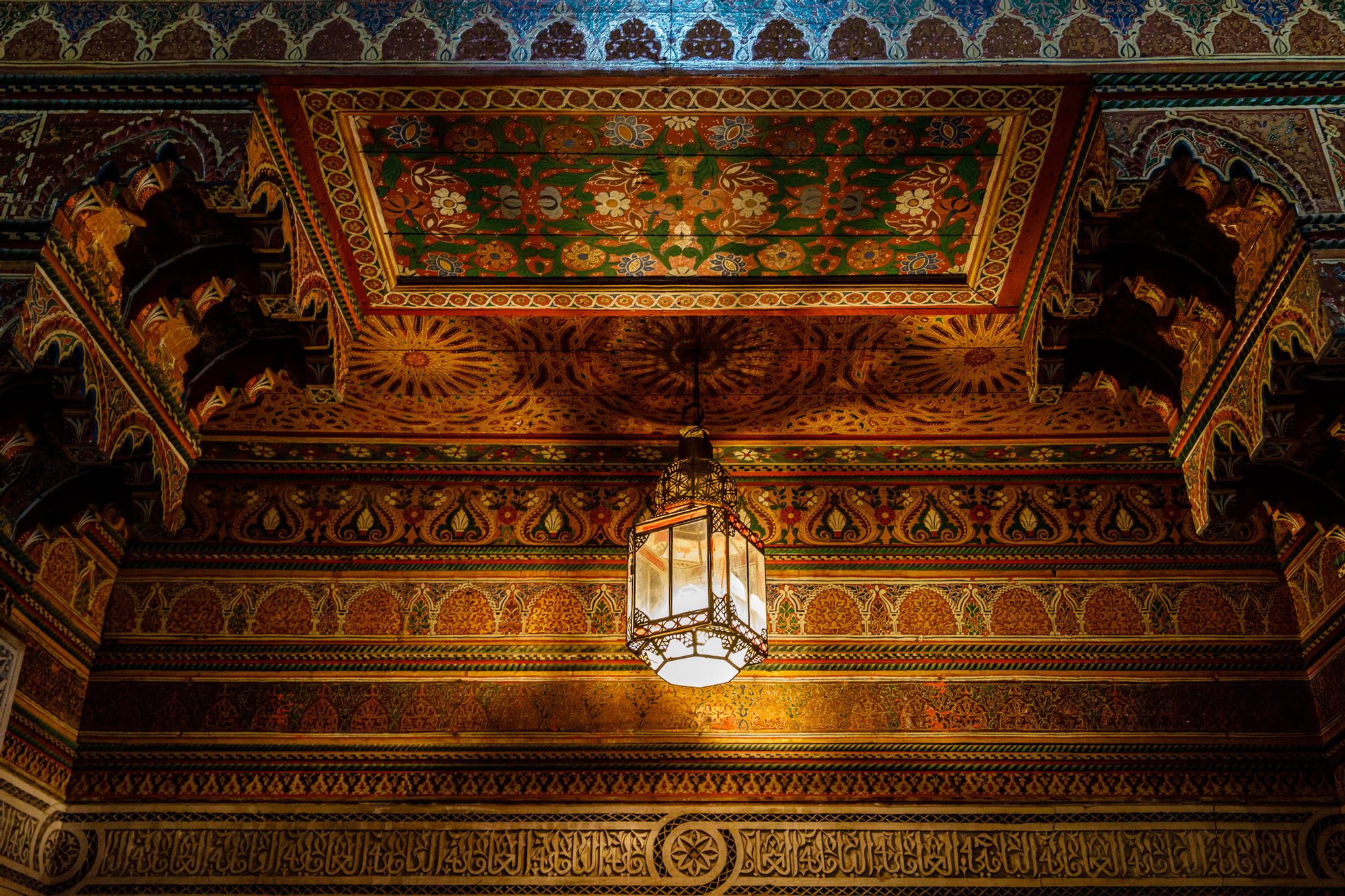
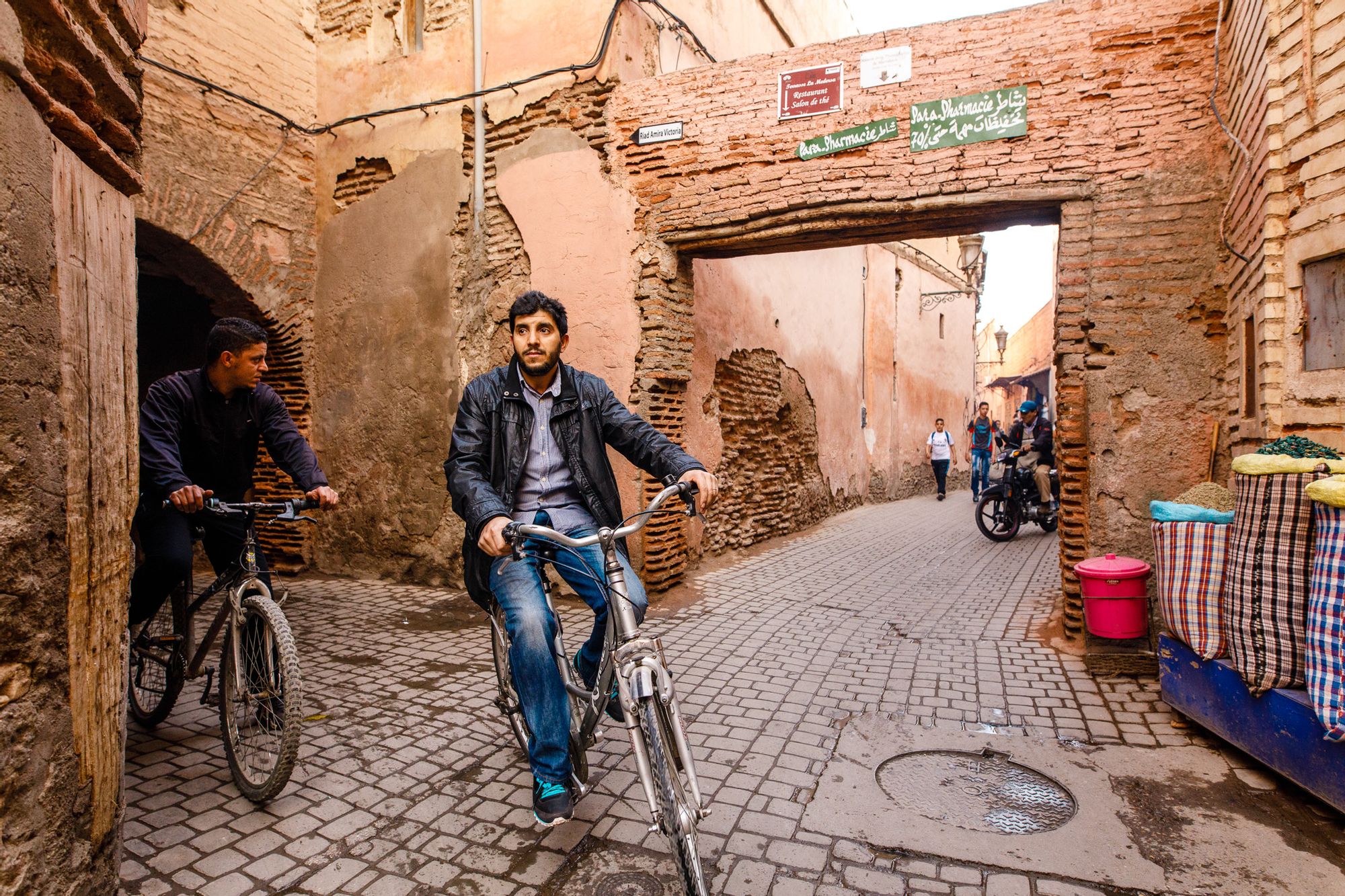
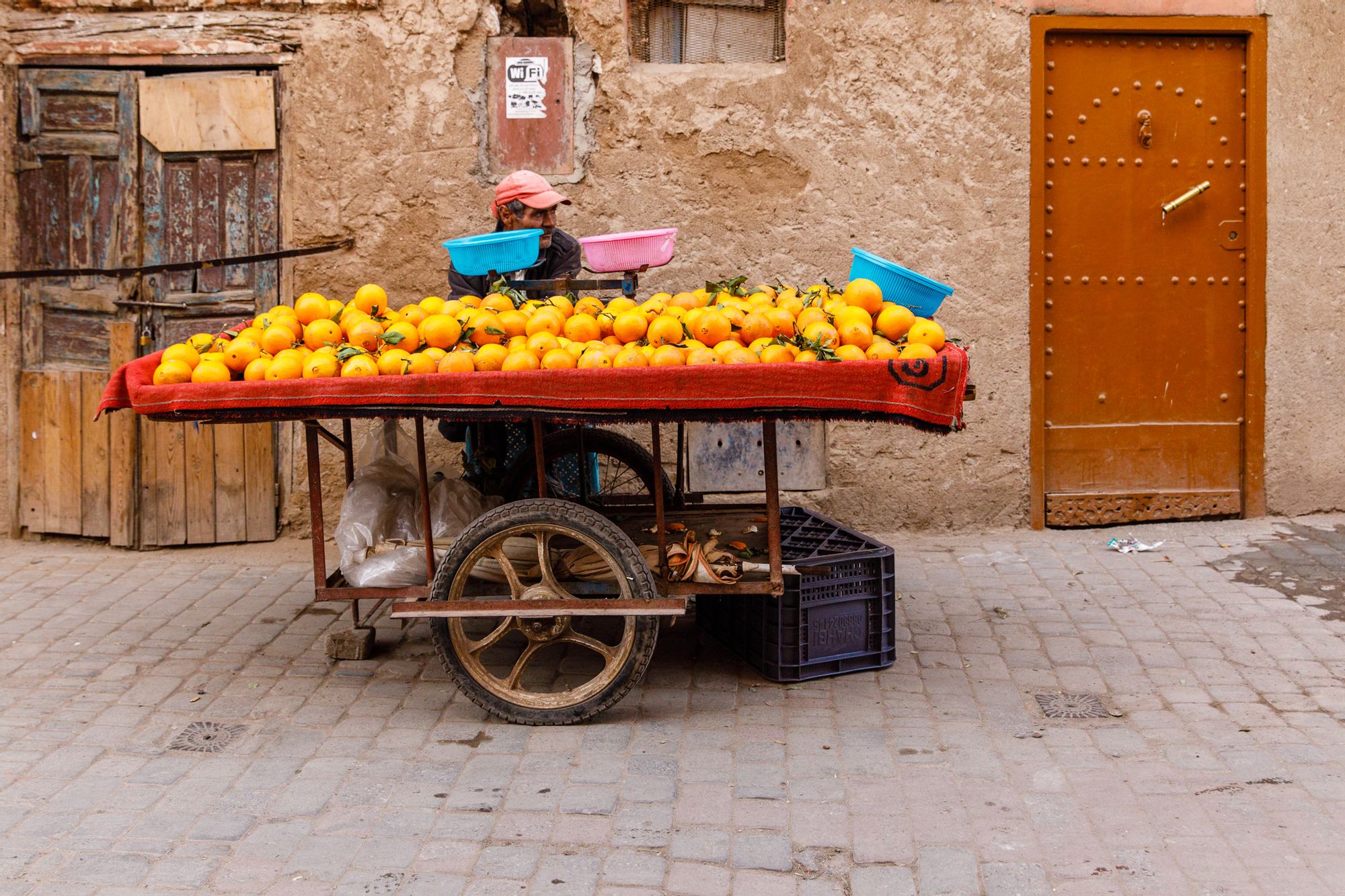
This is where I realised what a f***ing error I had made even believing this experience would be fun or easy. The first slope looked nigh-on vertical, and to guide us to the first plateau, we only had a sliver of iced-over bootprints. I pushed on, into thin air. The next two hours followed a similar pattern; we trudged up slopes bigger than the last, single file, treading carefully in one another’s crampon prints. About three-quarters of the way up, I was blowing hard. I was irritable, my right hand hurt, and I could barely walk ten paces without feeling more alveoli in my lungs collapse under their own weight.
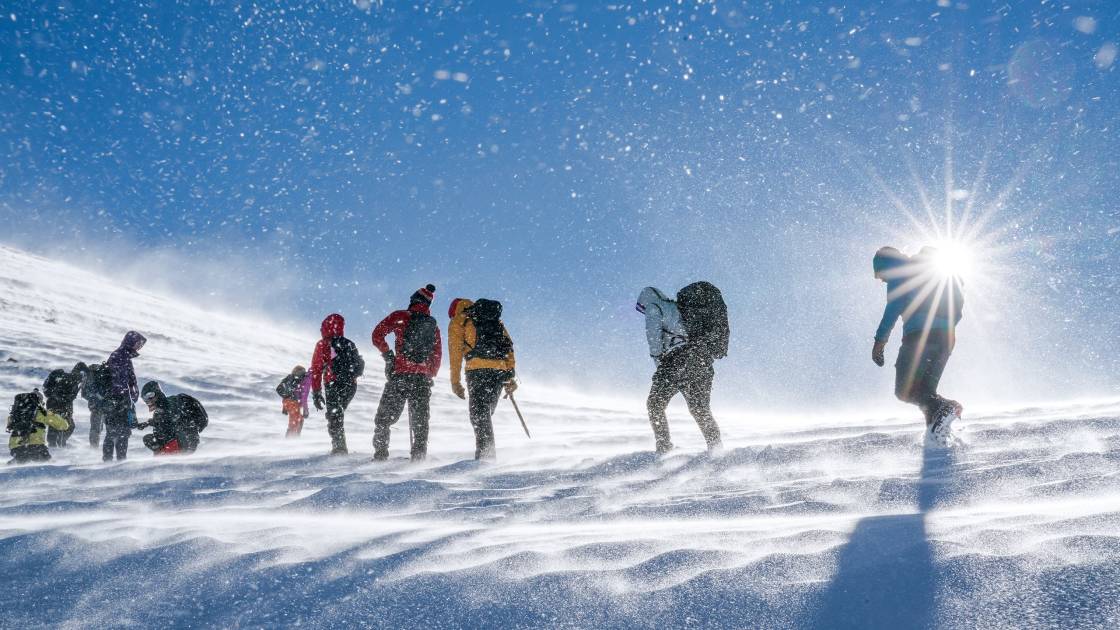
As we reached the summit, we collapsed in a small pile together and re-energised with more sugar. The ache in my hand was too much, so on Youssef ’s cheery recommendation, I swapped gloves to prevent my fingers falling off. Then came the revelation – this was not the summit.
Much to my horror, a narrow ridgeline of around 100m separated us from Toubkal’s actual peak. The ridge was a couple of feet wide, trodden in by other climbers, and either side was nothing but death. I sh*t you not – to my right there’s a rocky ledge I could hold on to, but behind me was a short slope before a sheer drop. Over the ledge was another sheer drop. It sounds obvious now, but Youssef told me to not look down, so I didn’t. He even held my hand, which I’m cool with admitting because I have no pride and staring a very real threat to your life in the face is chastening.
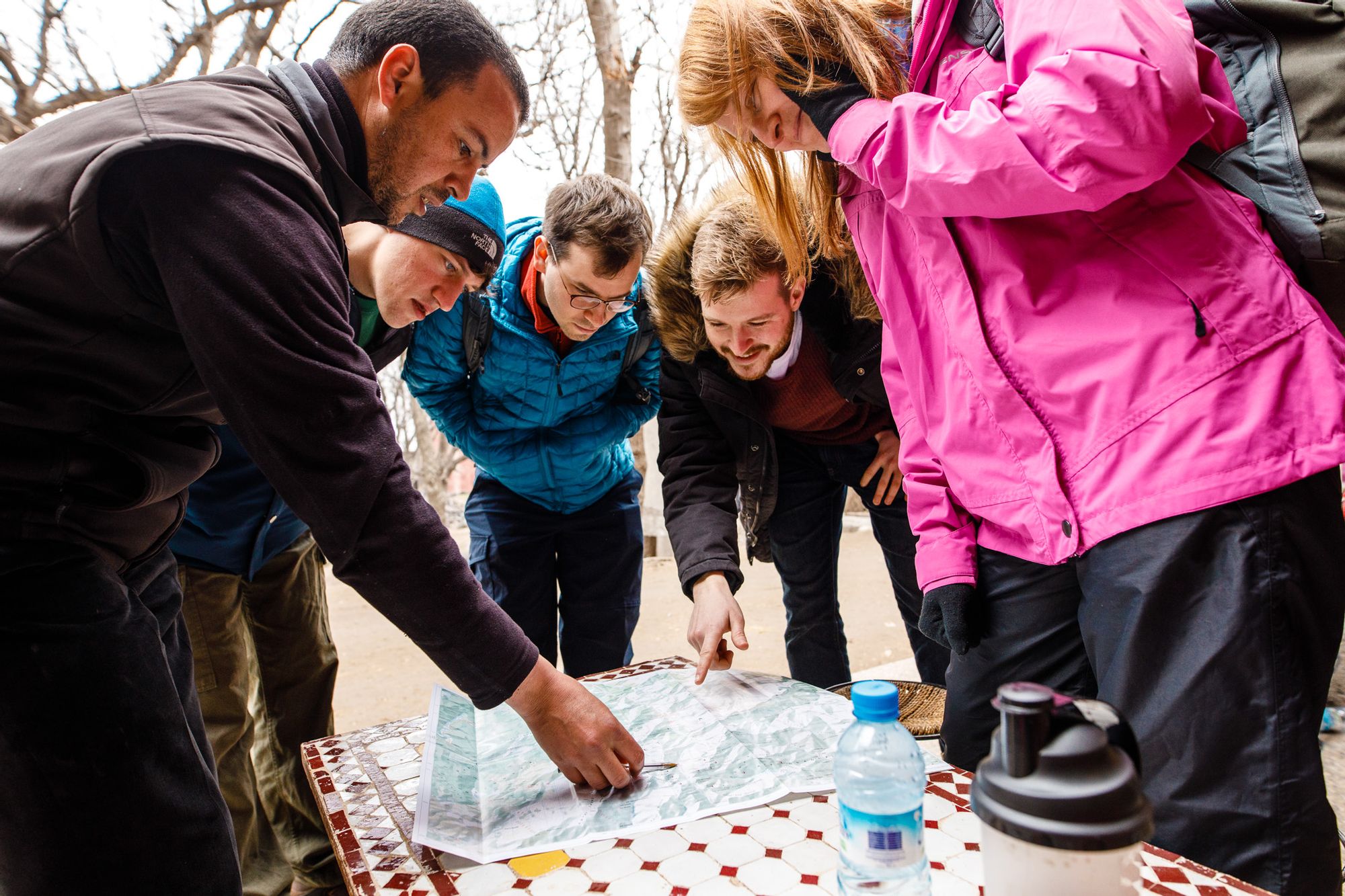
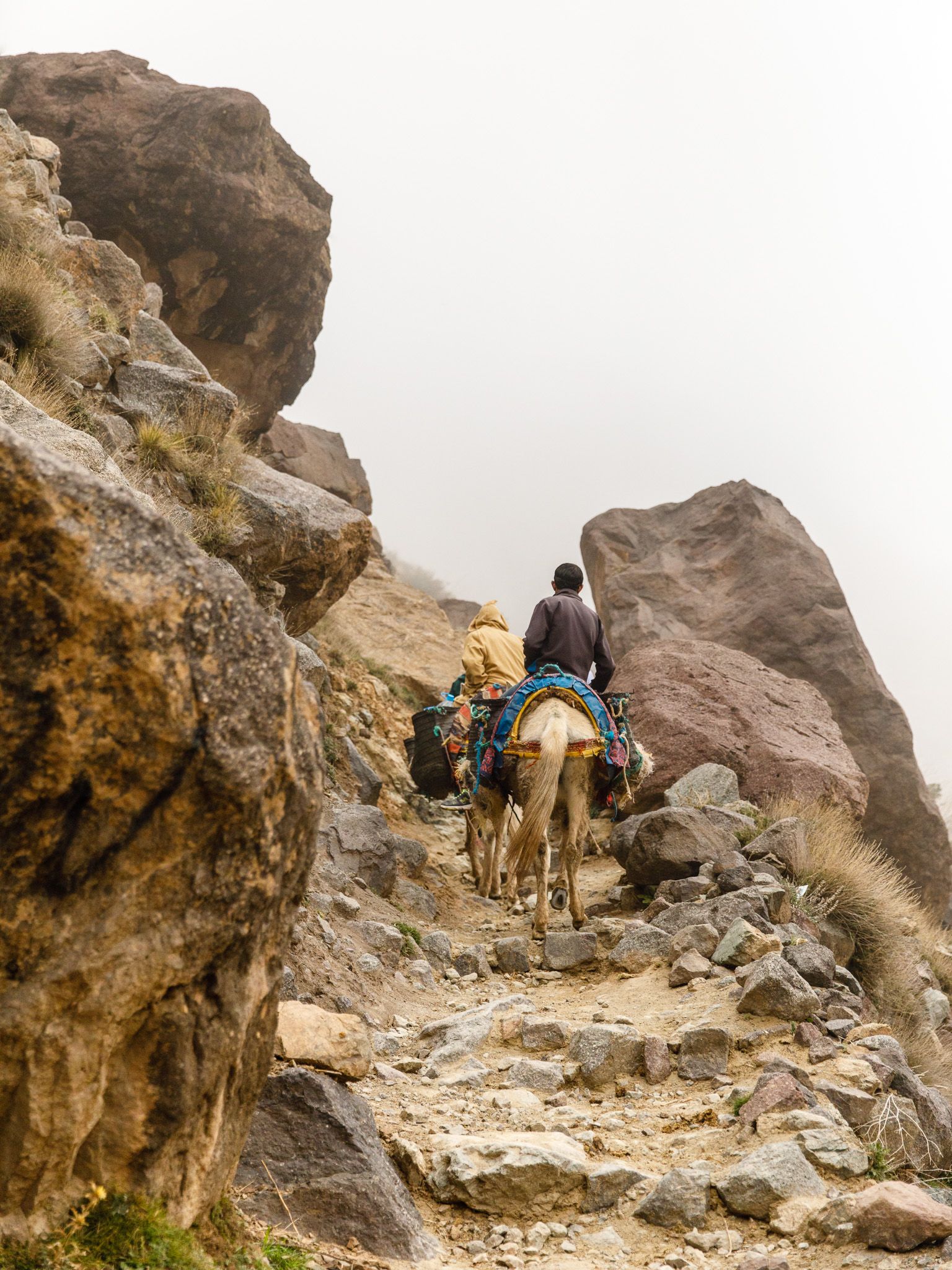
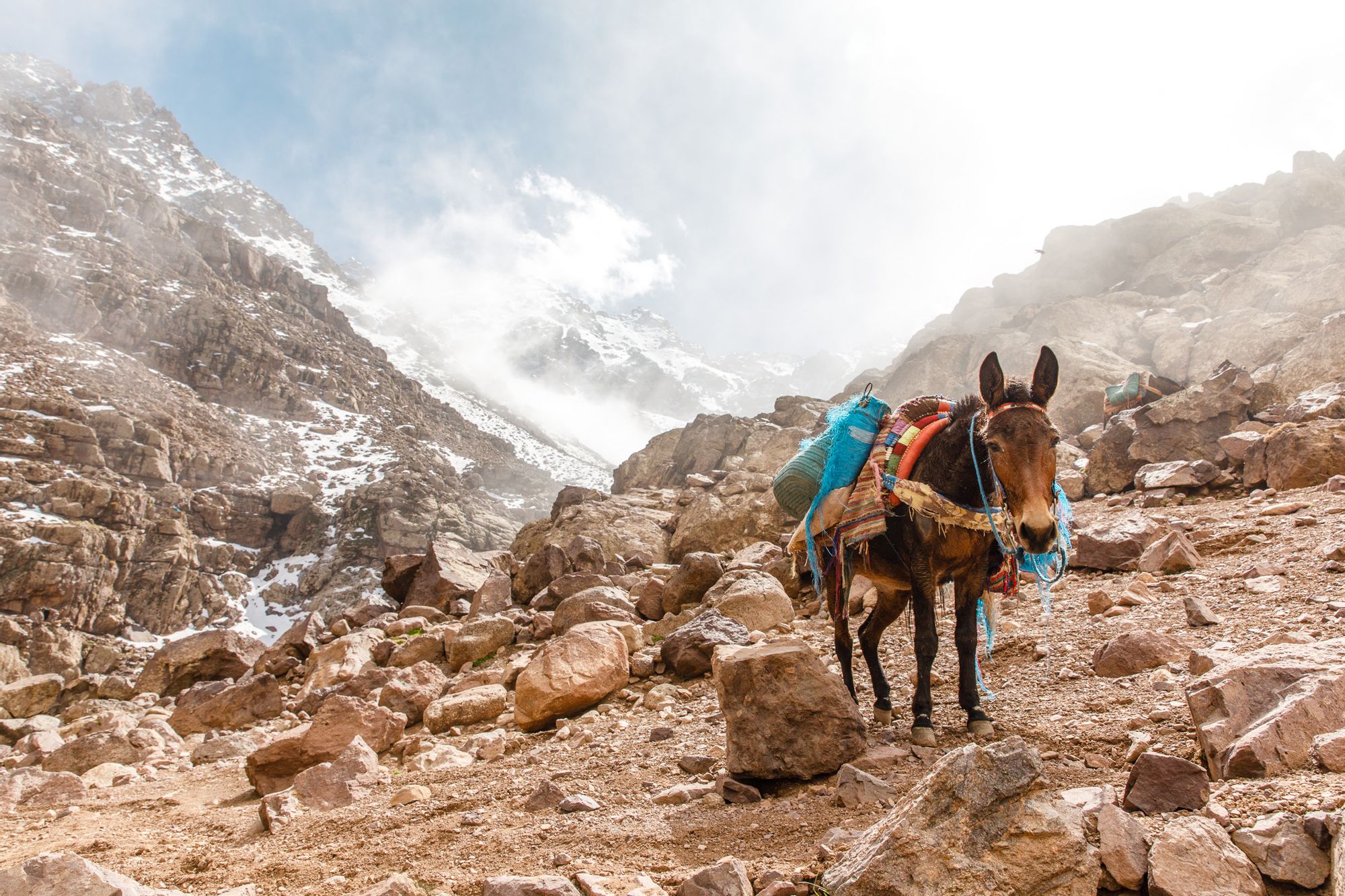
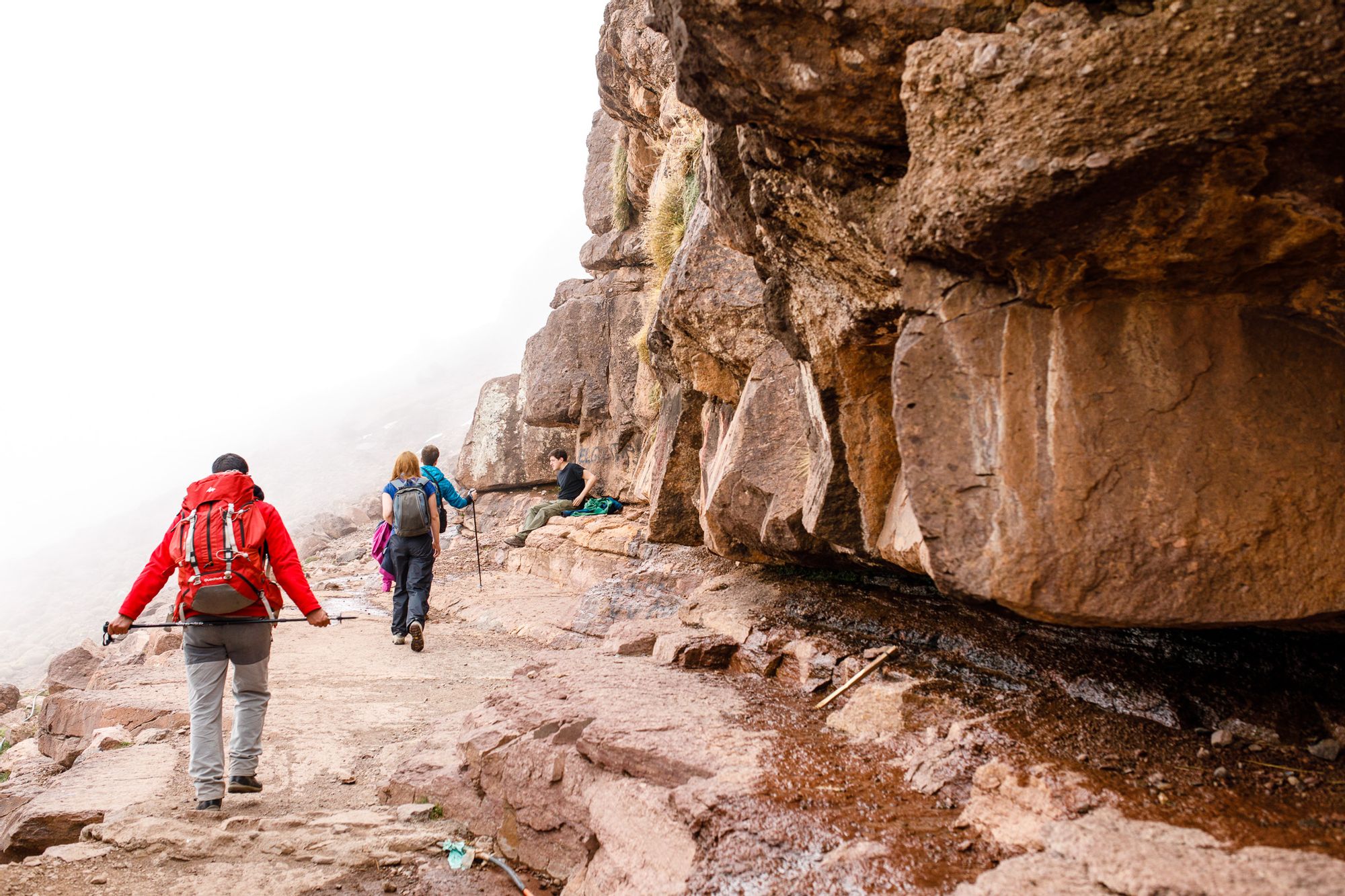
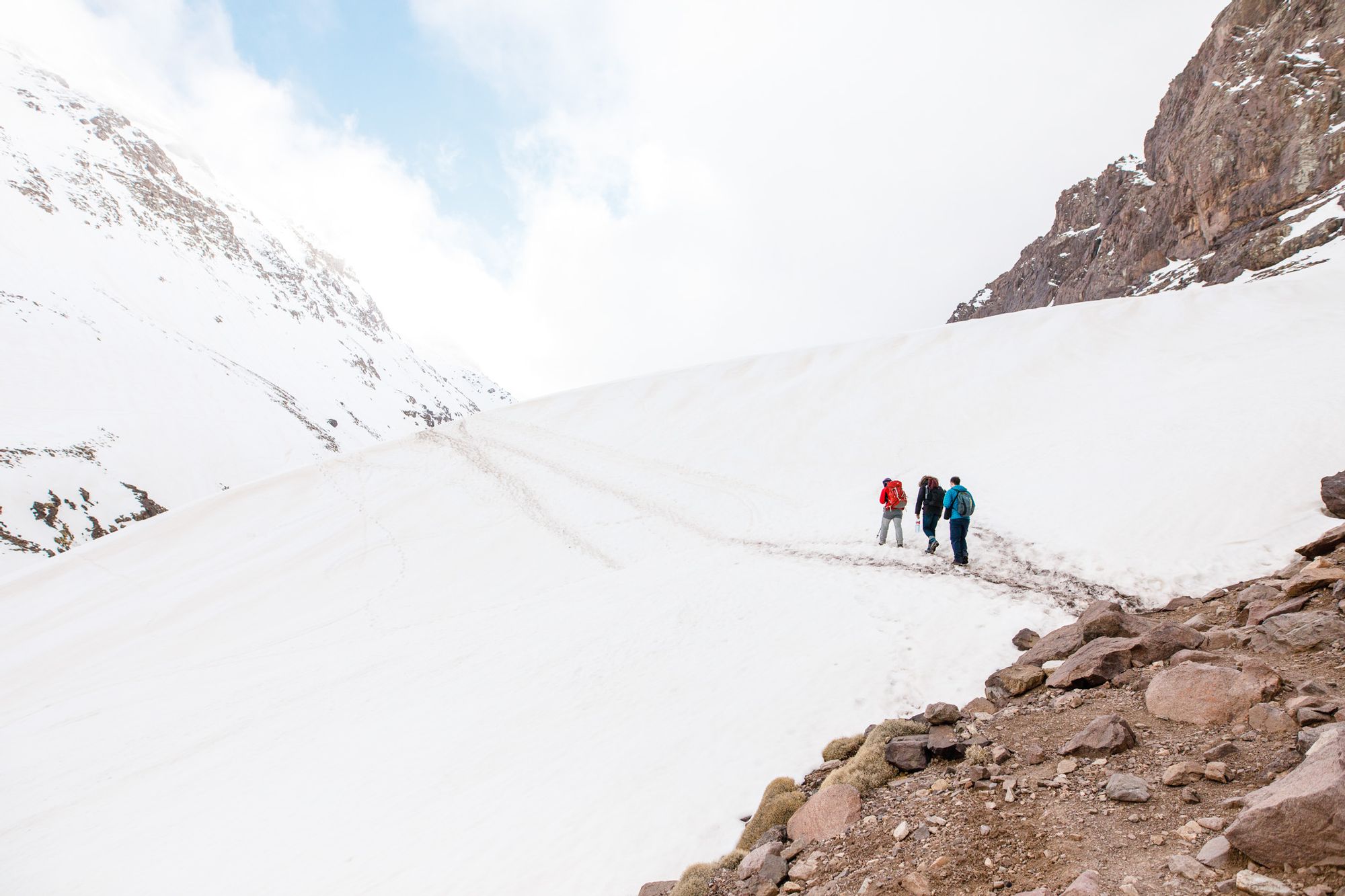
After climbing a mountain, I can reflect on my trip being pretty different to Krakauer’s. Nobody died. We always felt safe and capable in the expert hands of Youssef – this is important, as faith in your ability is as good as being able to do. Krakauer does say, however, that when you’ve summited a great height, you’re incapable of feeling much else other than cold and tired. I concur.
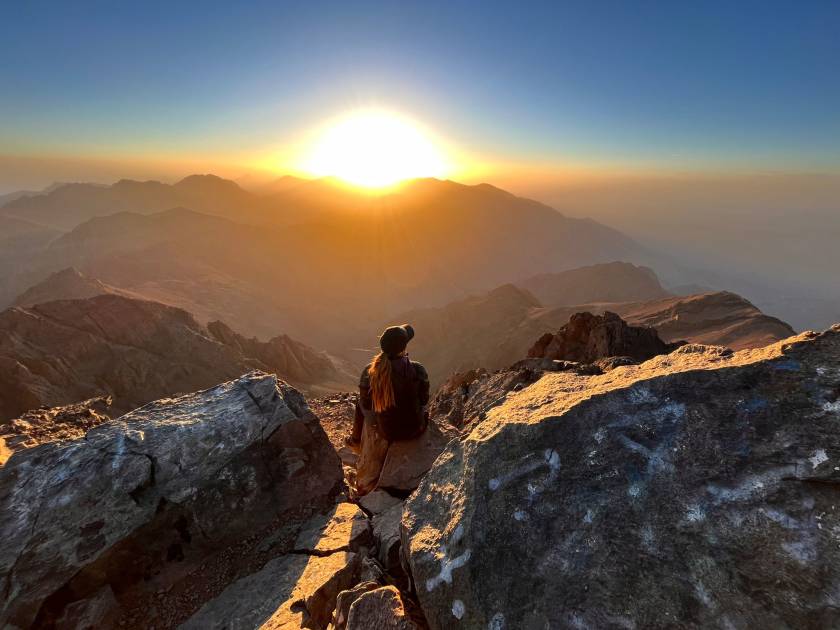
As we left the summit, the clouds above the Marrakech plains cleared, and the smaller Anti Atlases to our right revealed themselves in all their glory. I climbed that mountain on spite and bad intentions, but on the two-hour descent, I felt oddly satisfied, despite trudging down gradients like I was in Grand Theft Auto. Maybe it was the scale of what I had achieved, or maybe it was the lack of oxygen, but I considered giving Everest a go next.
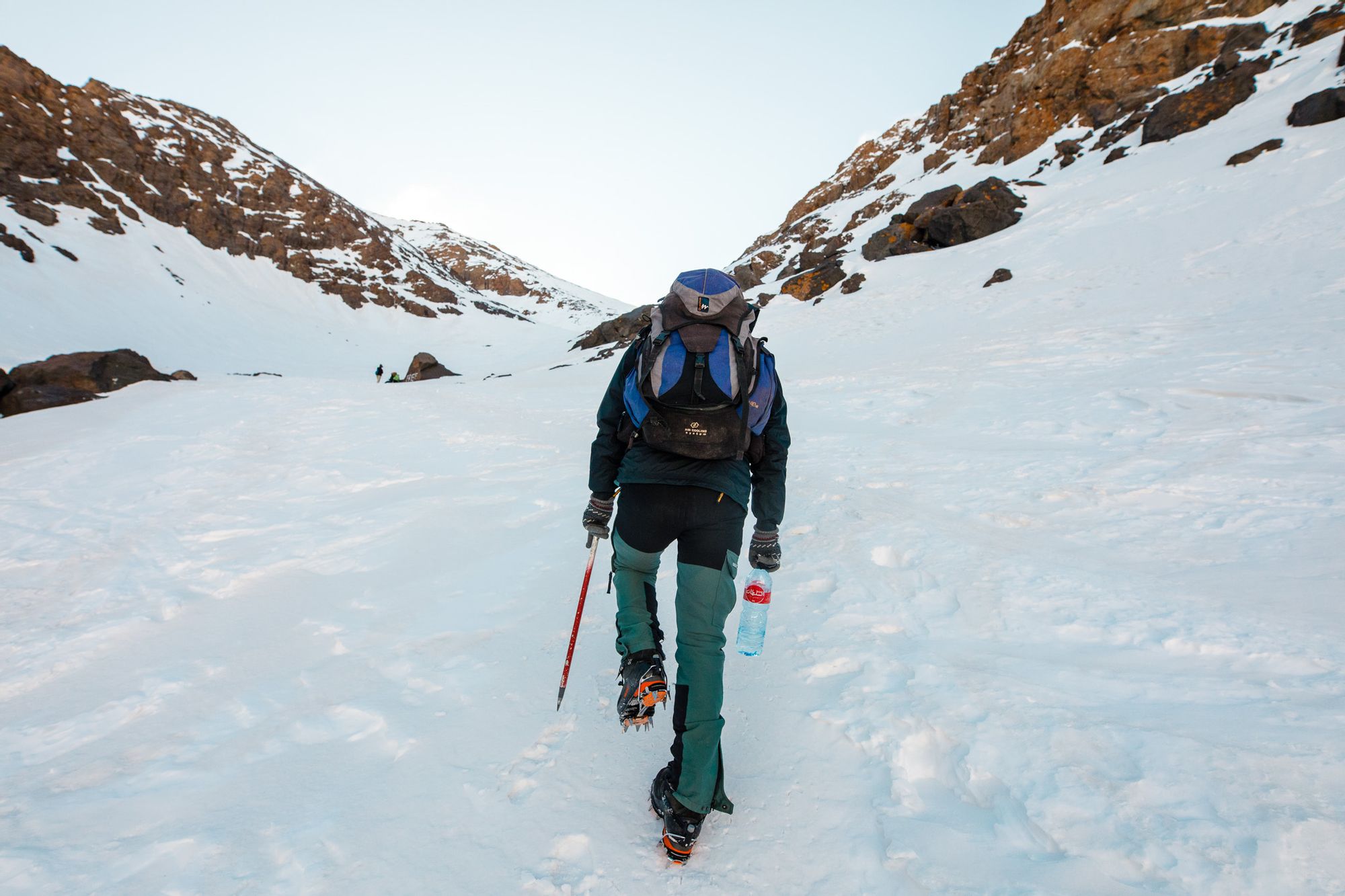
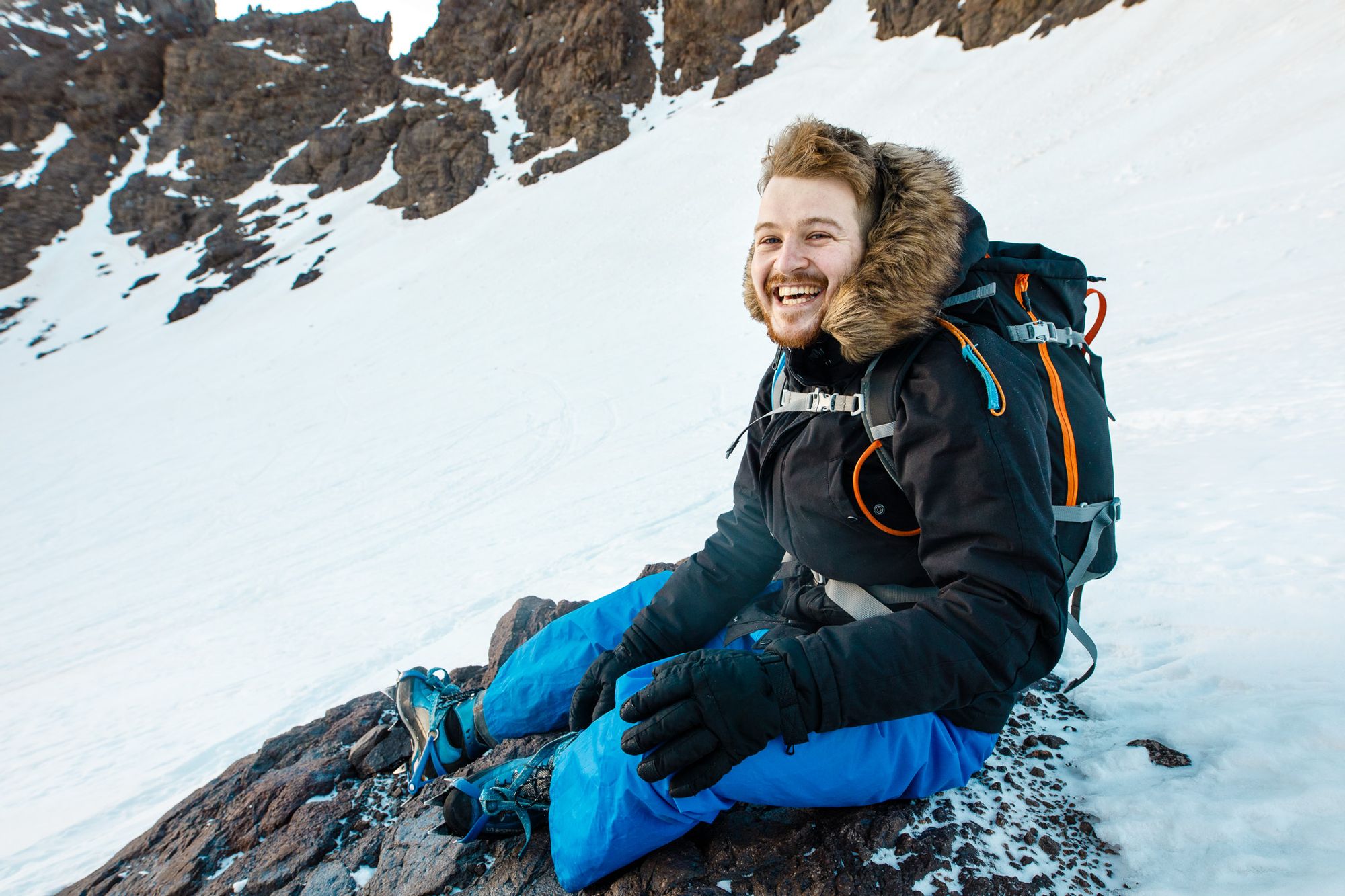
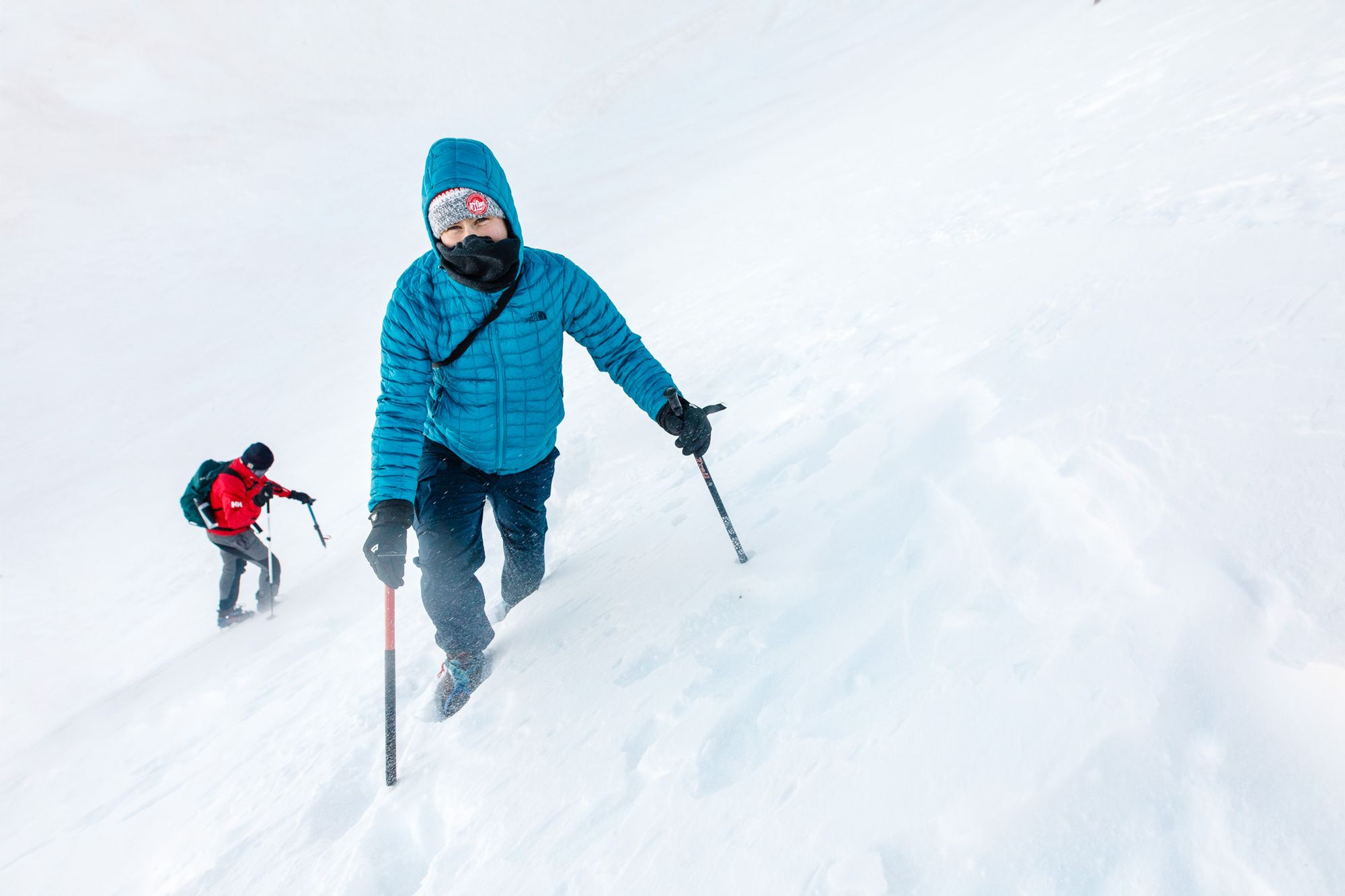
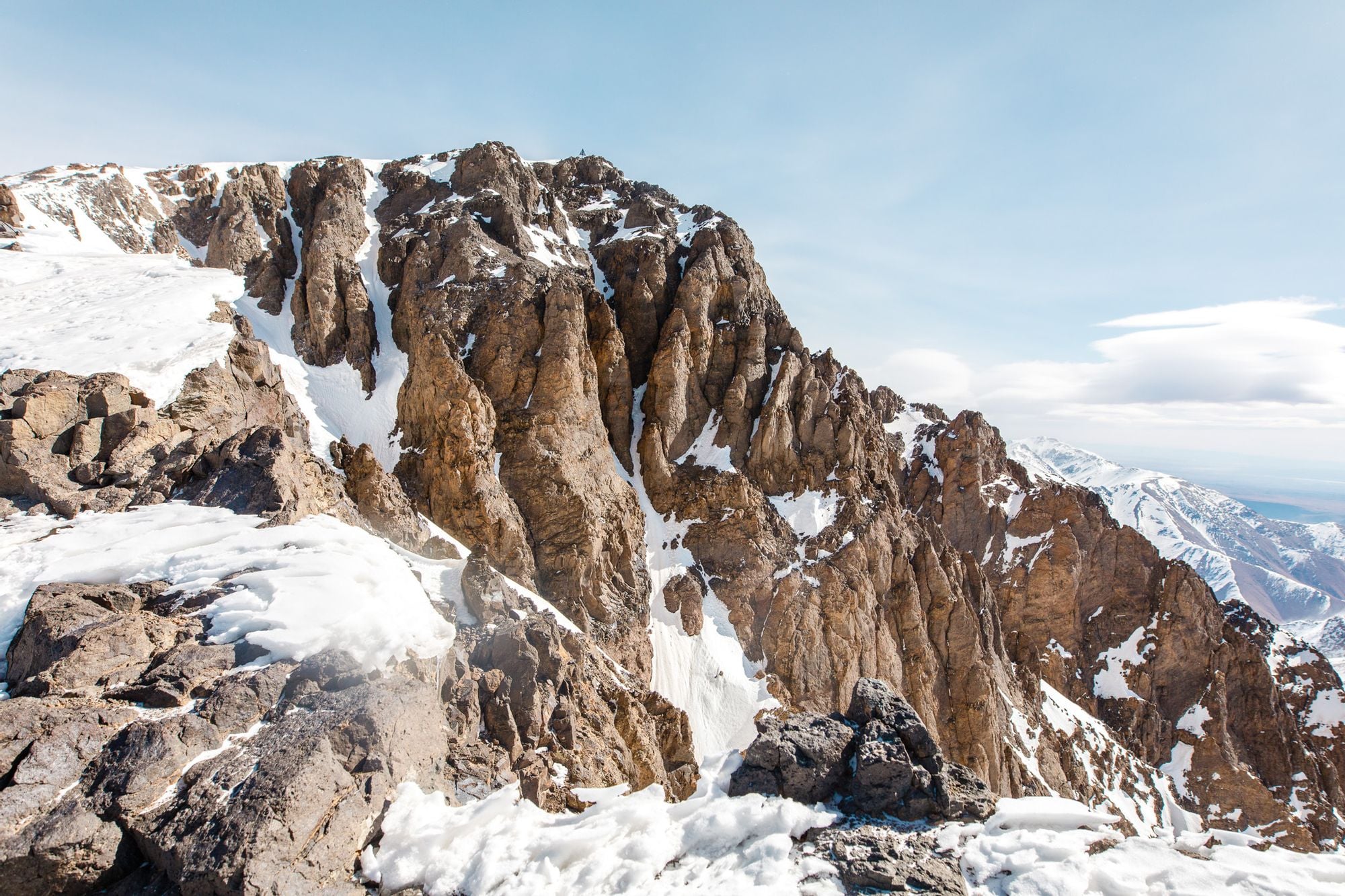
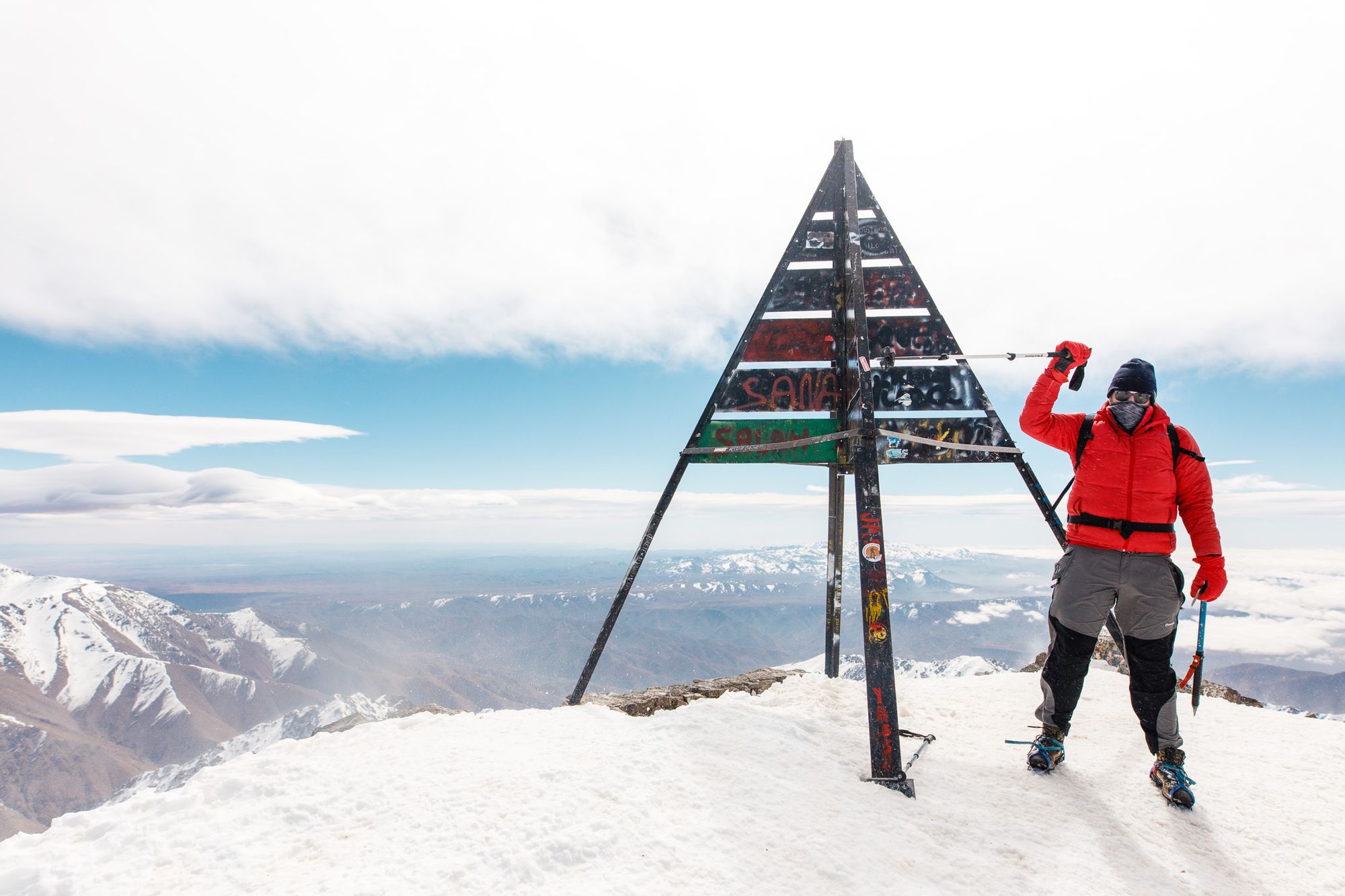
If you want to make your mum proud, you join us on one of our hiking trips in Morocco, or another Moroccan adventure.
*All photo credit goes to Arron Leppard. Follow Arron on Instagram for more travel and lifestyle photos.


